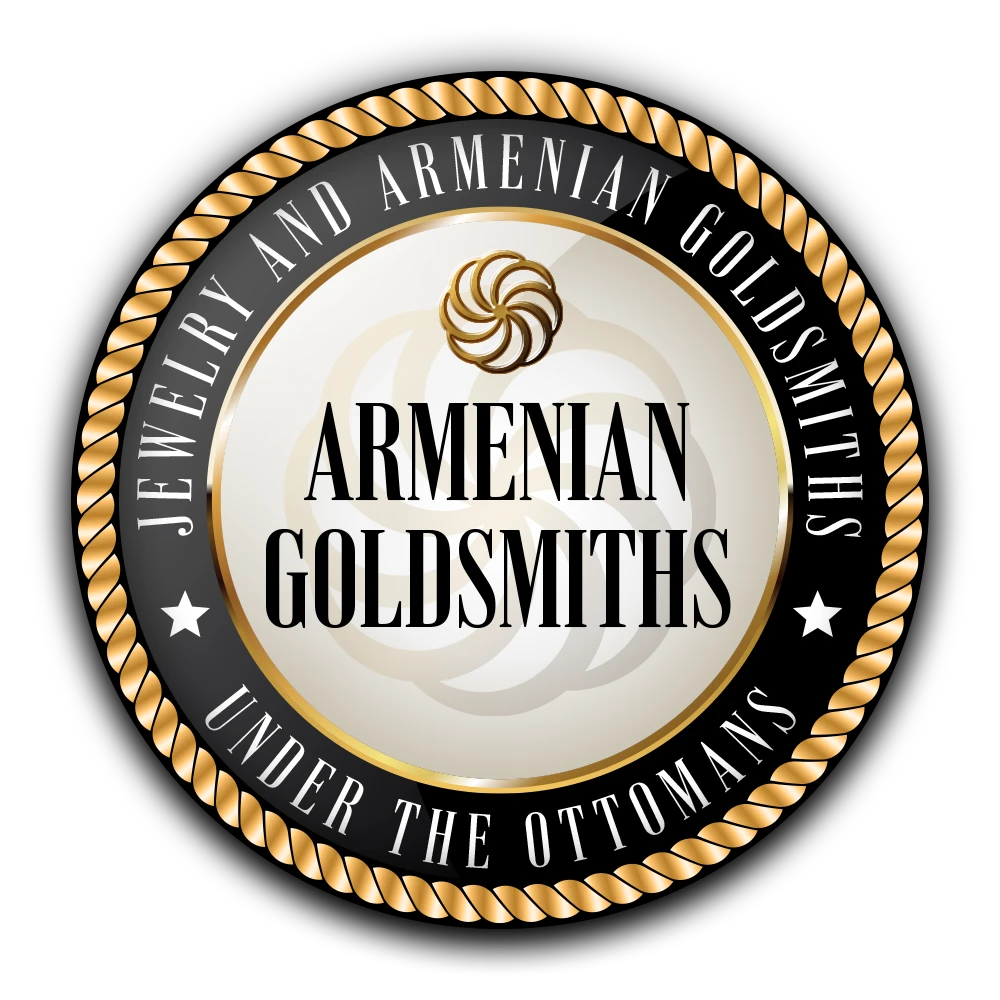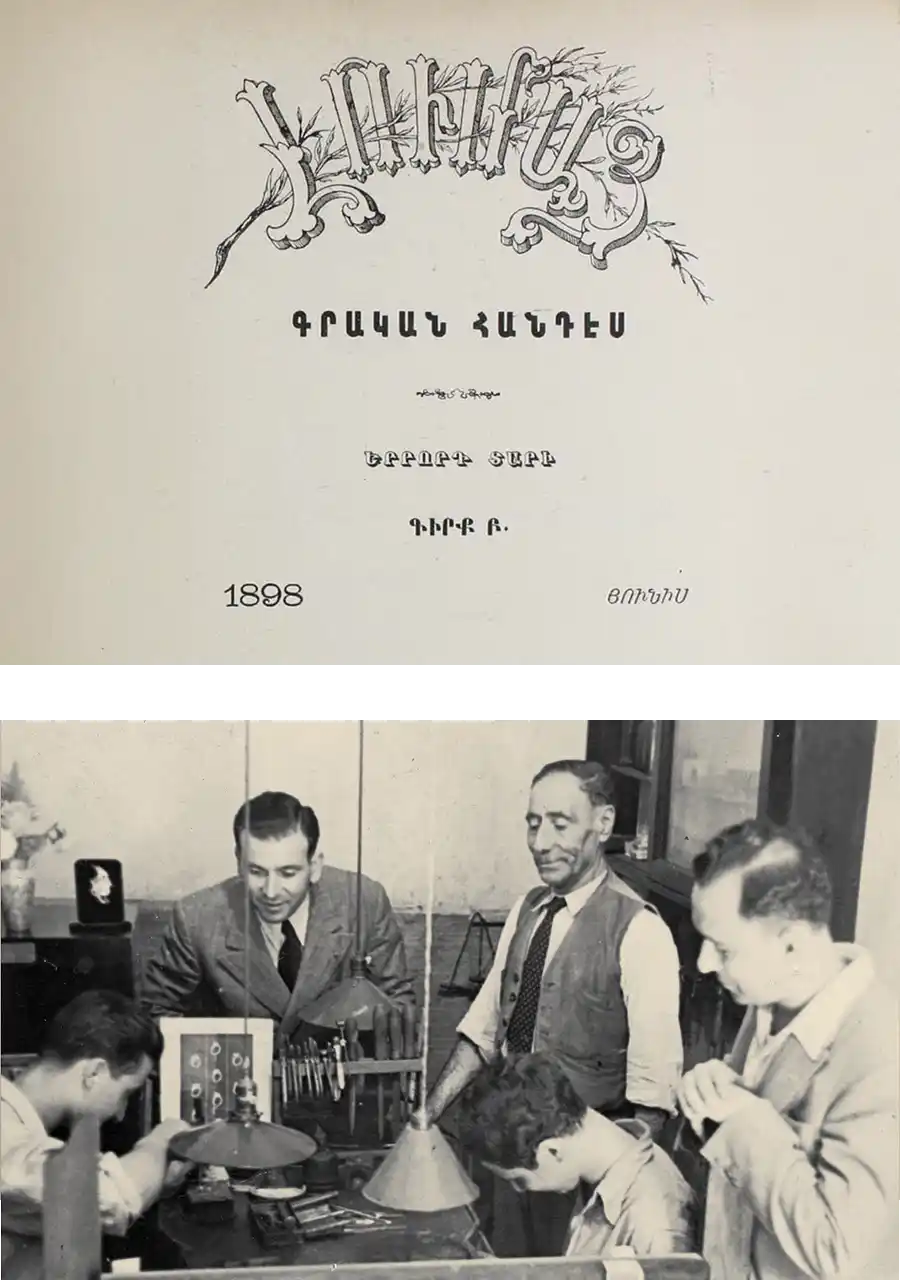THE CHARTER FOR THE PERMANENT UNITY AND SOLIDARITY OF THE GUILD OF ARMENIAN ARTISAN GOLDSMITHS
The historical value of archival documents about the guilds that played major roles in the commercial life of the Ottoman era, in particular of their internal texts is indisputable in terms of raising our knowledge about Ottoman guilds in general and those of artisan goldsmiths in particular. These documents provide a great opportunity to understand the inner logic of the guilds, their operating principles, selection procedures, the initiation ceremonies of the elected principals, the principals’ tax exemptions, the master-apprentice relations, the methods of resolution of disagreements among guild members, the conditions of admission to and expulsion from the guild, the procedures of calculation and auditing of the guild’s income and expenses, the principles for establishing and terminating partnerships among members, the relationships between the spiritual officials assigned by the episcopacy and the members of the guild, and finally, the rules and conditions concerning the solidarity among the members in matters of old age, illness or death. The Charter for the Guild of Jewelers in Armenian in the journal Luma (Contribution), printed in Tbilisi in 1898 (Volume II, published in July of the second year) provides clear evidence. As far as we understand from the charter, the symbol of a crowned snake is used in the seal of the guild, emphasizing the importance of caution. The journal Luma which published the charter was aware of the historical importance of this eight-page manuscript, written on thick blue paper: “Taking into consideration the fact that we possess very few written sources on guilds, we believe that the publication of this manuscript will be of great benefit to researchers who are working on them.”
Based on the typeface of the manuscript that bears the heading, “Ganon Garkatrutyants Joğovo Vosgeriç Arhesdavorats, Hokatsyal i Beds Haverjagan Khağağutyan yev Miyapanagan Siro” (The Charter for the Permanent Unity and Solidarity of the Guild of Armenian Artisan Goldsmiths), the journal Luma claims that the document definitely belongs to the first quarter of the 19th century. Thus, it would not be erroneous to assume that the charter reflects the conditions of a period when Muslim and non-Muslim guilds were more and more dissociated. That being said, the fact that some of its articles (for instance Article 11 on one of the rules of nominating apprentices to mastership) indicating some changes in the rules concerning the Turkish members of the guild shows that we cannot claim the existence of a complete and definite dissociation. The author of the manuscript is a Senior Father Küd Aganyantz, on whom we do not have much information. The journal also indicates that this guild charter of 35 articles was published after being translated from classical Armenian [Krapar] into modern Armenian [Aşkharhapar]. We believe it will be highly beneficial to include the translation of the charter here.
- First of all, it will be appropriate to select four faithful and skillful principals for this meeting. One of them will become Master workman and the others his advisors and these four will serve the benefit of the artisan goldsmiths for one year. Should they perform their duties well, then and as long as the majority of the union approves and desires them to continue their duty justly and honestly, they can continue this duty.
Without doubt, these people should be senior in age or very able craftsmen or affluent persons. They should possess Christian faith, be fair and not greedy, because both God and Man want to see such people to manage the world and the union. The election will be done as follows: The guild members shall elect twelve people among themselves; these twelve people shall elect four managers among themselves and these four shall elect one clerk, one servant and one priest for themselves.
- During the election of the master workman and his three aides and advisors, first an oath will be sworn in front of the priest and on the Cross and the Bible, to protect and look after the whole guild.
The Oath Procedure
The Cross and Bible are placed on a table covered with a clean white cloth, the priest stands beside the holy items with his surplice and stole, the elected raise their right hands and stand before the Cross and the Bible. The priest reads aloud the oath for them and they repeat together with the priest as follows:
…
You can find the sad and interesting detailed content of this statute in our book.

